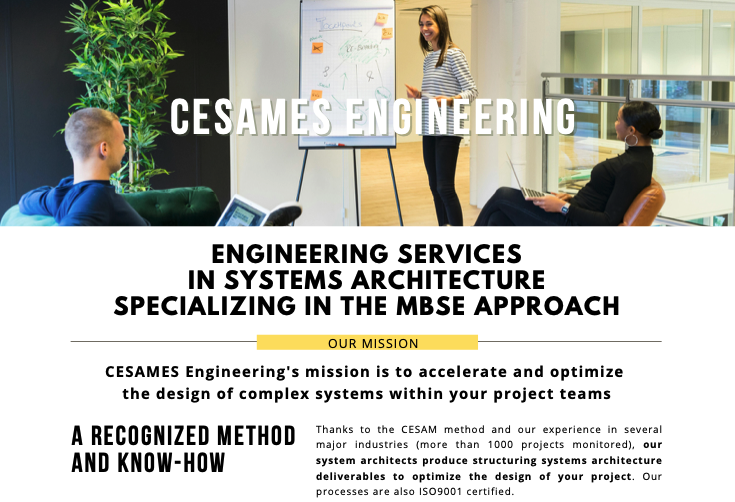Operational support
IN SYSTEM ARCHITECTURE SPECIALIZING IN THE MBSE APPROACH
Accelerate and optimize the design of complex systems within your project teams
Let’s secure your projects together through engineering and system architecture.
A recognized method and know-how
Using the CESAM method and our experience in several industries (over 1,000 projects monitored), our system architects produce structuring system architecture deliverables to optimize your project design. Our processes are also ISO9001 certified.
Certified system architects
Our system architects are trained and certified by CESAM, and benefit from operational and collaborative know-how allowing them to quickly integrate into your teams and support them in a pragmatic and frugal manner.
MBSE expertise tooled
Our teams can model system architecture deliverables in several tools (Xatis, Capella, Catia Magic, Enterprise Architect, Rhapsody, etc.) depending on the chosen modeling framework and your project environment.
| A pragmatic approach
Our guarantee: immediate significant gains
➤ Time savings in design thanks to the tool-based implementation of a minimally invasive systemic approach
➤ Rapid development of project team skills, trained in best practices in systems engineering (MBSE)
Our customer references
AIRBUS ATLANTIC
CAILABS – CEGELEC
DGAC – EDF
FORVIA – SAFRAN
SOMFY – VOSSLOH
| A diversified offer
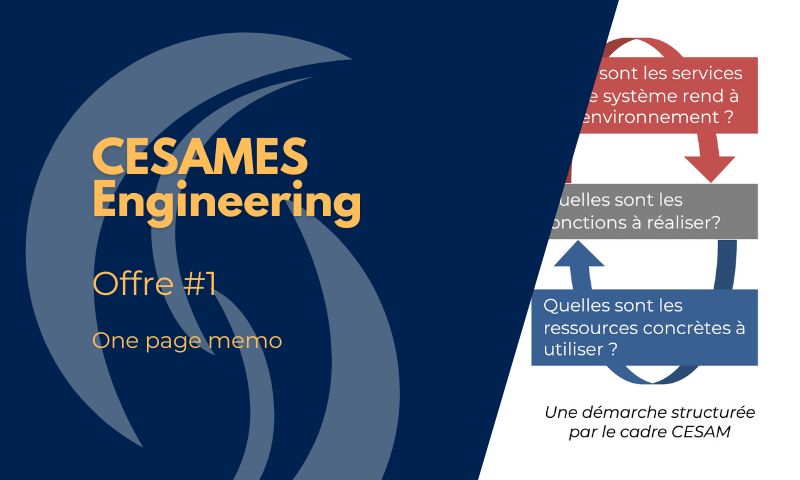
OFFer #1
Design of complex systems: initialization
Making informed and appropriate design choices, properly considering needs, during the design phase is essential to avoid late-stage constraints.
A system cannot be reduced to a set of parts and must be considered as a whole to ensure its robustness, proper functioning, and to anticipate design risks.
➤ Properly integrating components involves ensuring that the stakeholders from the different disciplines designing them have a common and shared vision of the system’s design.
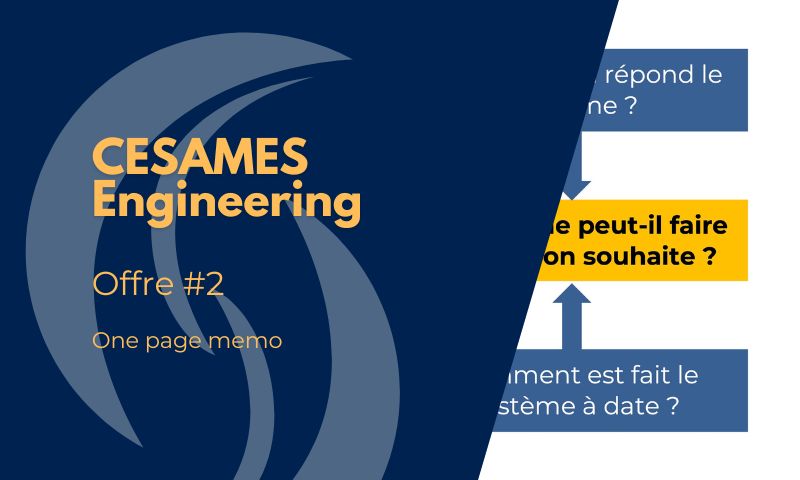
OFFer #2
Design of complex systems: consolidation
The initially expressed requirement may be imprecise or may have evolved over the course of a project, leading to a new study and design verification in light of the requirement.
Similarly, the performance of the system of interest in relation to its resources and desired capacity must be consolidated and refined as a whole.
➤ Securing and justifying design choices is a key element in ensuring the continuation of engineering studies, identifying necessary changes as early as possible, and minimizing delayed impacts.
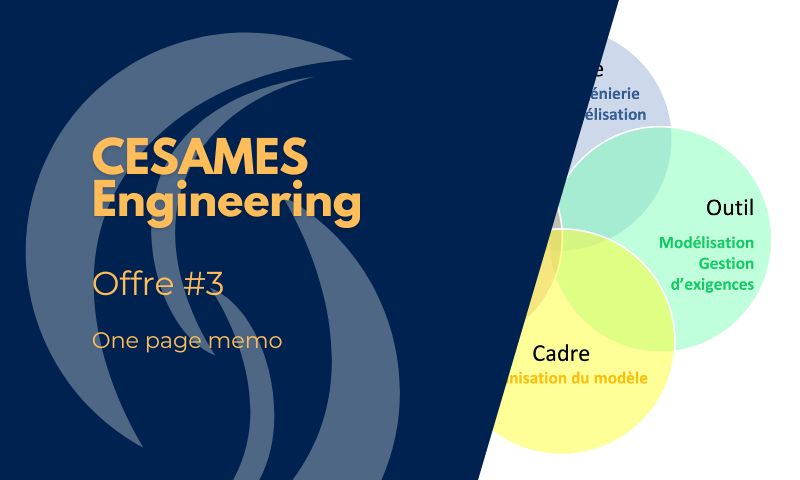
OFFer #3
Model-Based Systems Engineering (MBSE)
In the development of complex, multi-physical, and multi-business systems, mutual understanding and convergence between them is a key element to ensuring proper system design.
Developing tool-based solutions allows for data-based design, but the link between data models must be ensured to ensure the consistency of design models.
➤ Capitalizing on systems engineering data is a lever to facilitate traceability, accelerate impact analyses, and reuse products to respond more quickly to requests.
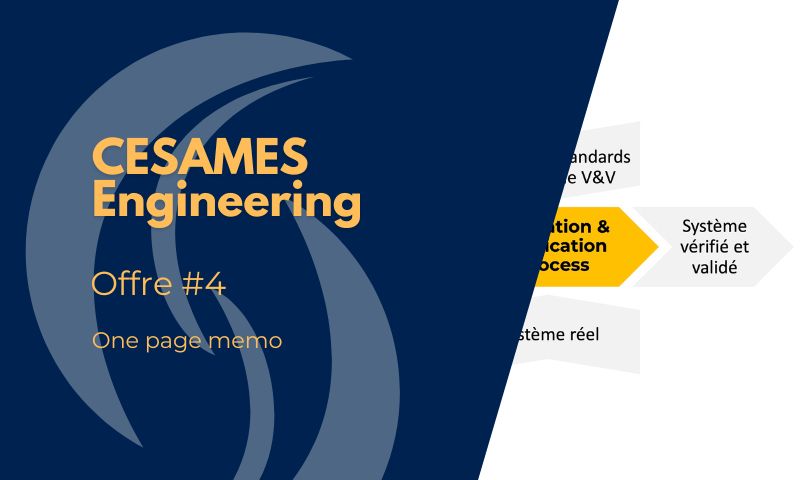
Definition of verification and validation (V&V) plans
The later a defect is corrected, the more expensive it becomes: V&V is therefore a lever for minimizing project risks and reducing overall project costs.
V&V is intrinsically linked to the following activities:
— design, to ensure that the system is well designed (with respect to requirements) and the right system (with respect to the need);
— integration, to guarantee the conformity of the actual system;
— and safety, to demonstrate robustness.
➤ Anticipating V&V activities and the resources to be implemented from the design phase onward helps optimize commissioning/marketing times.

